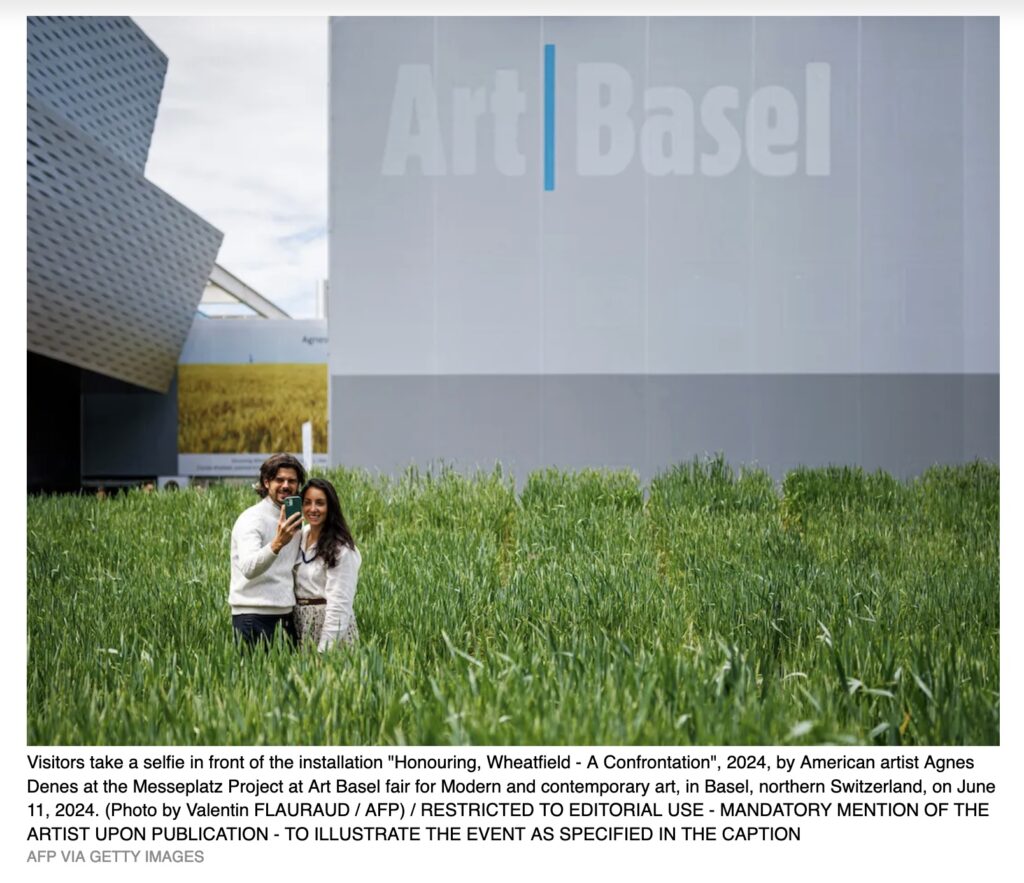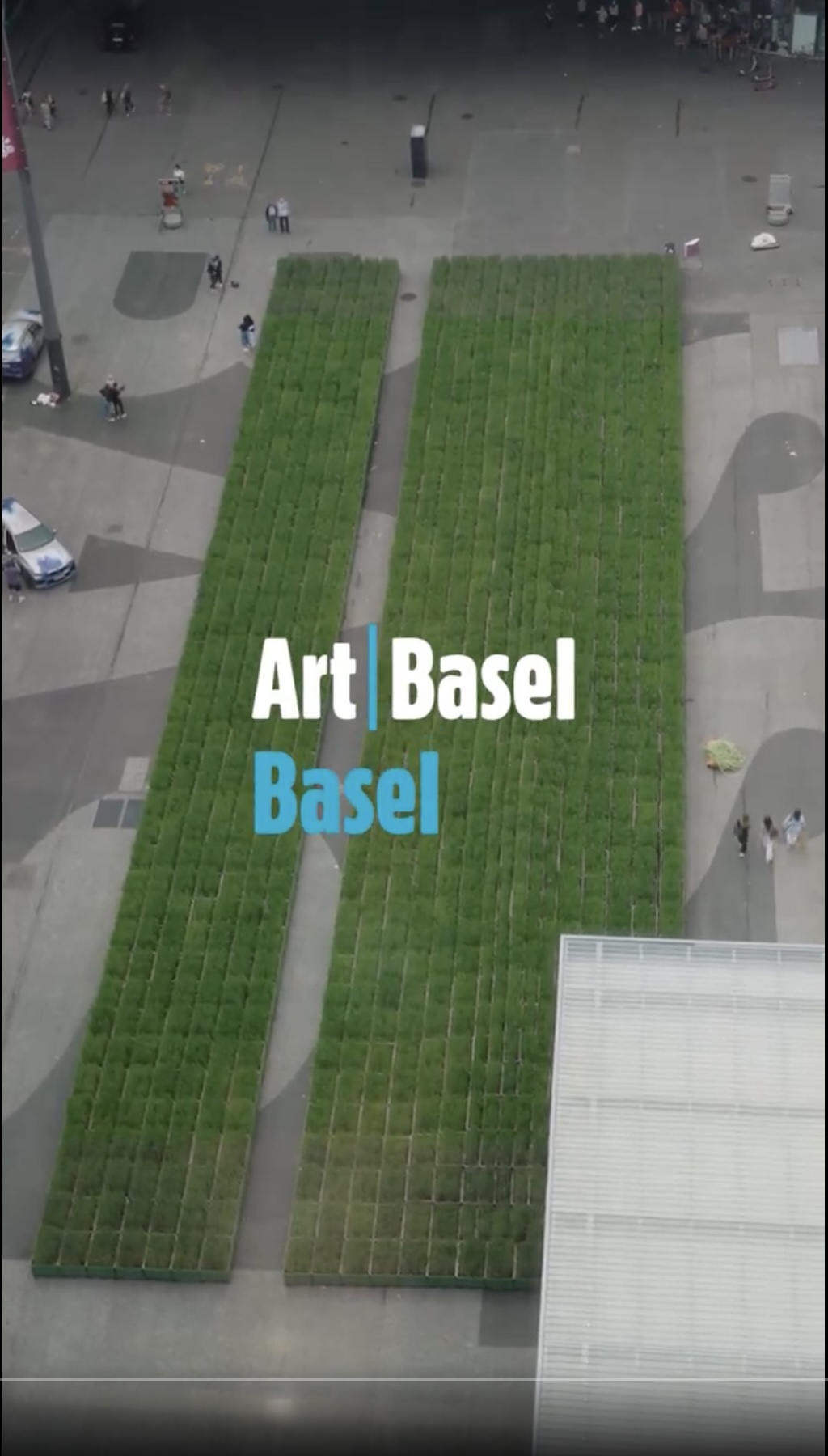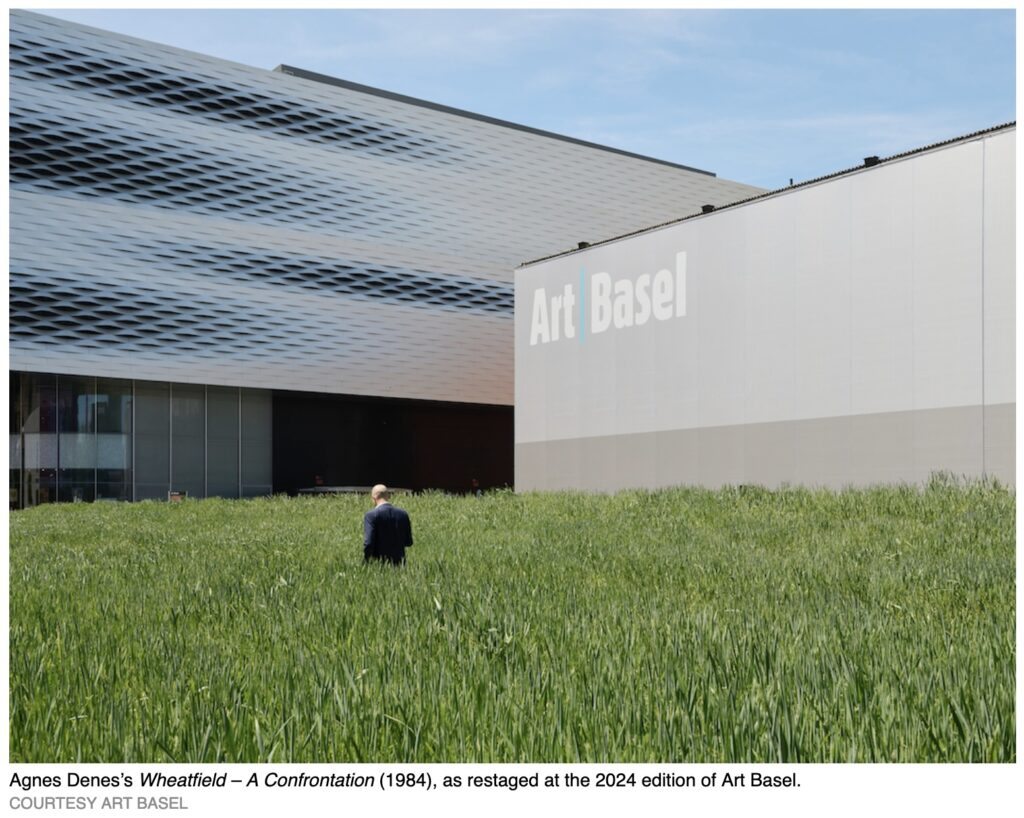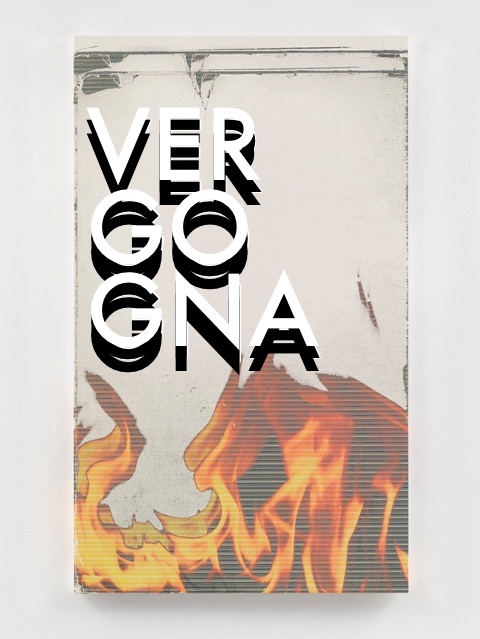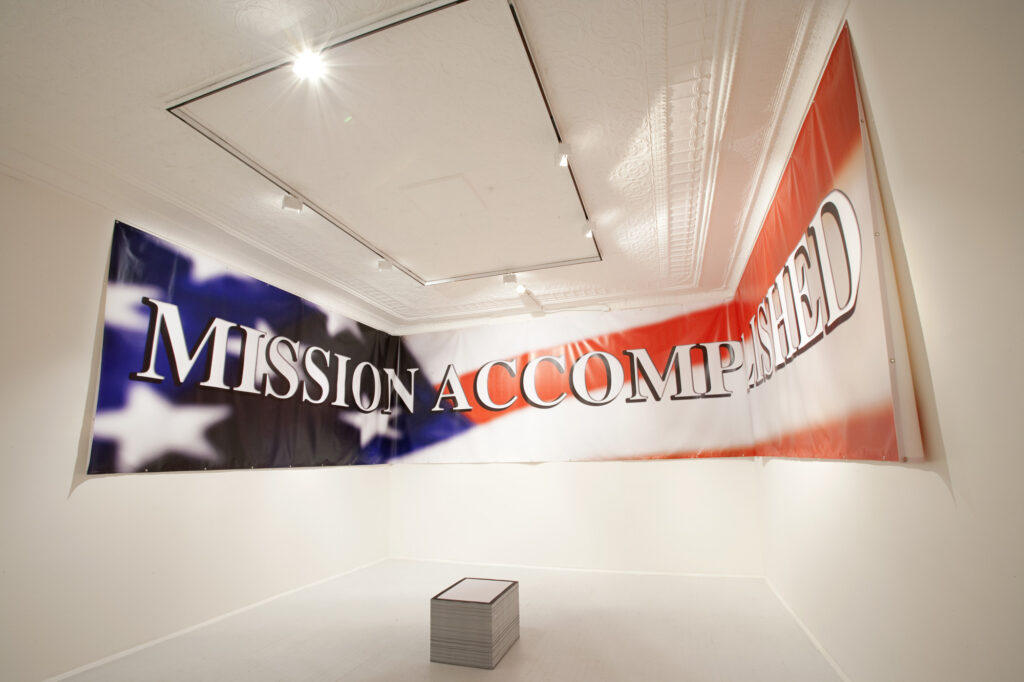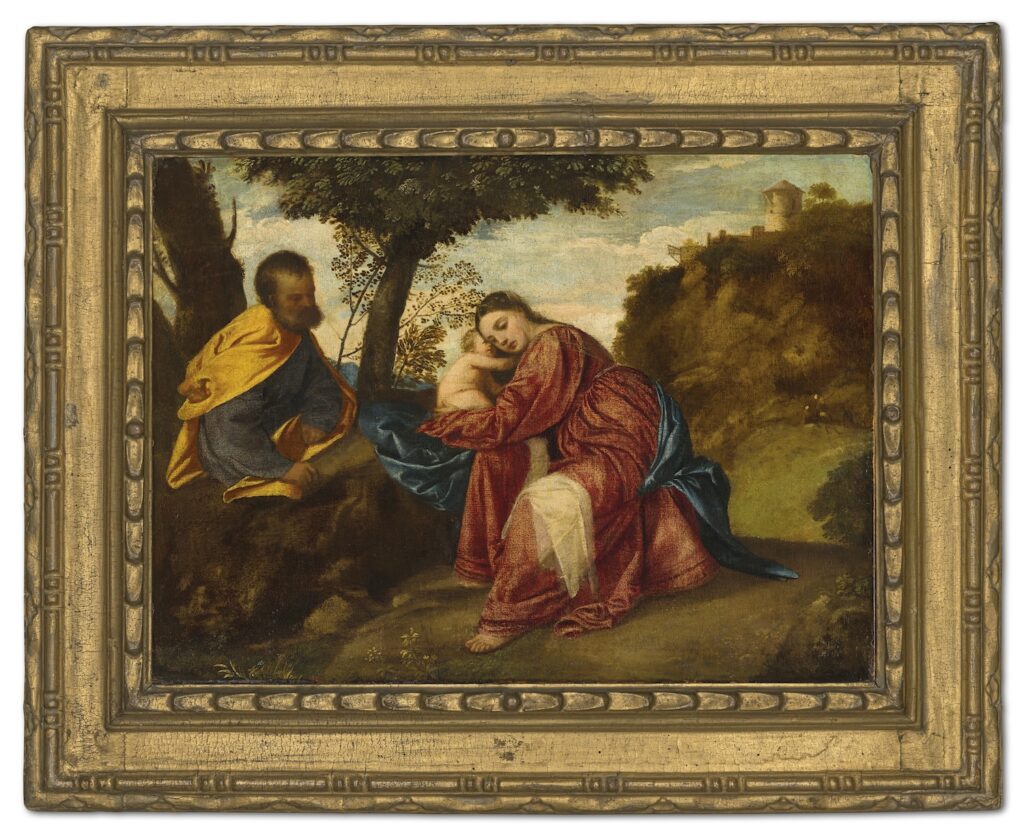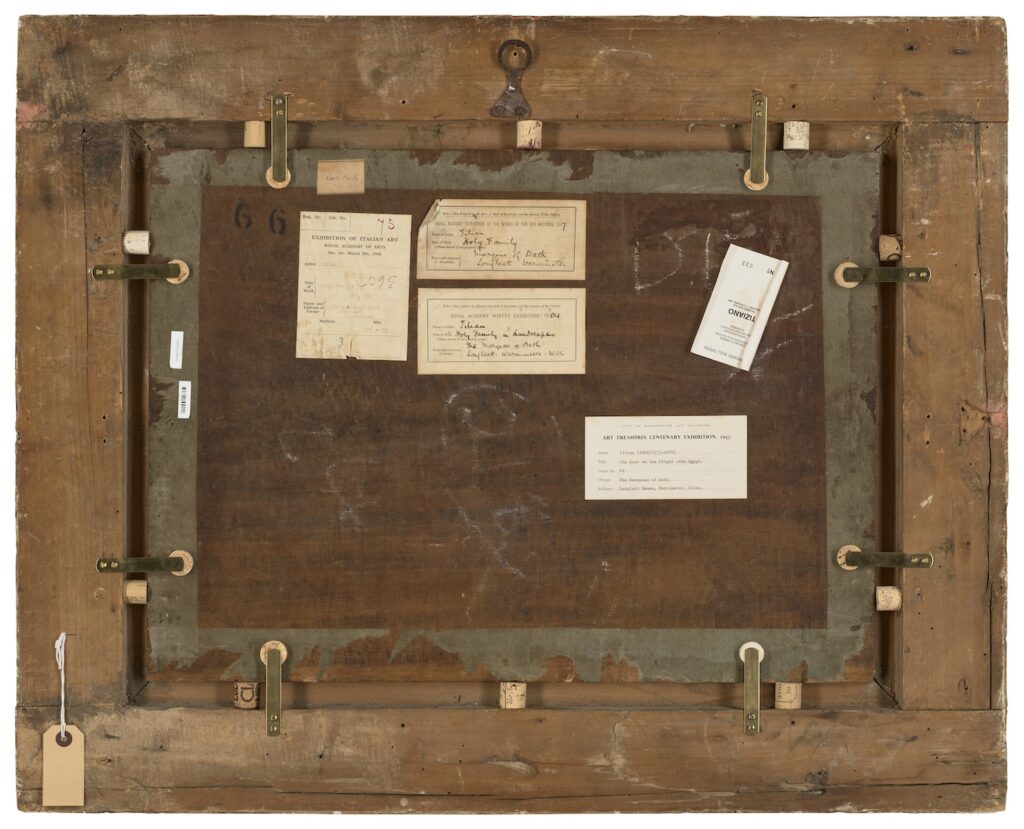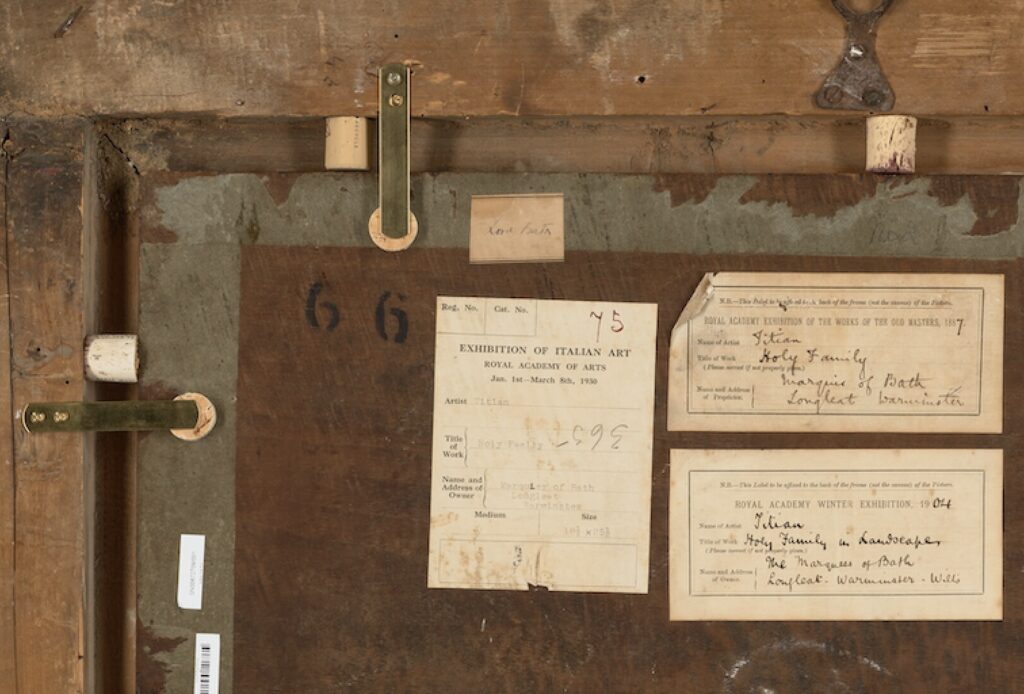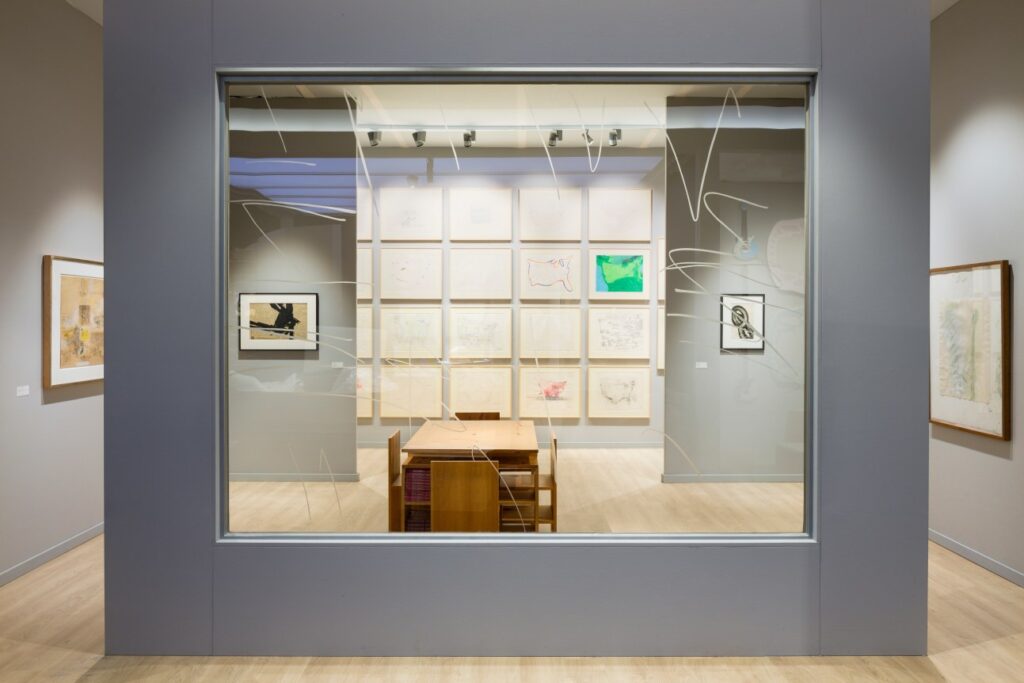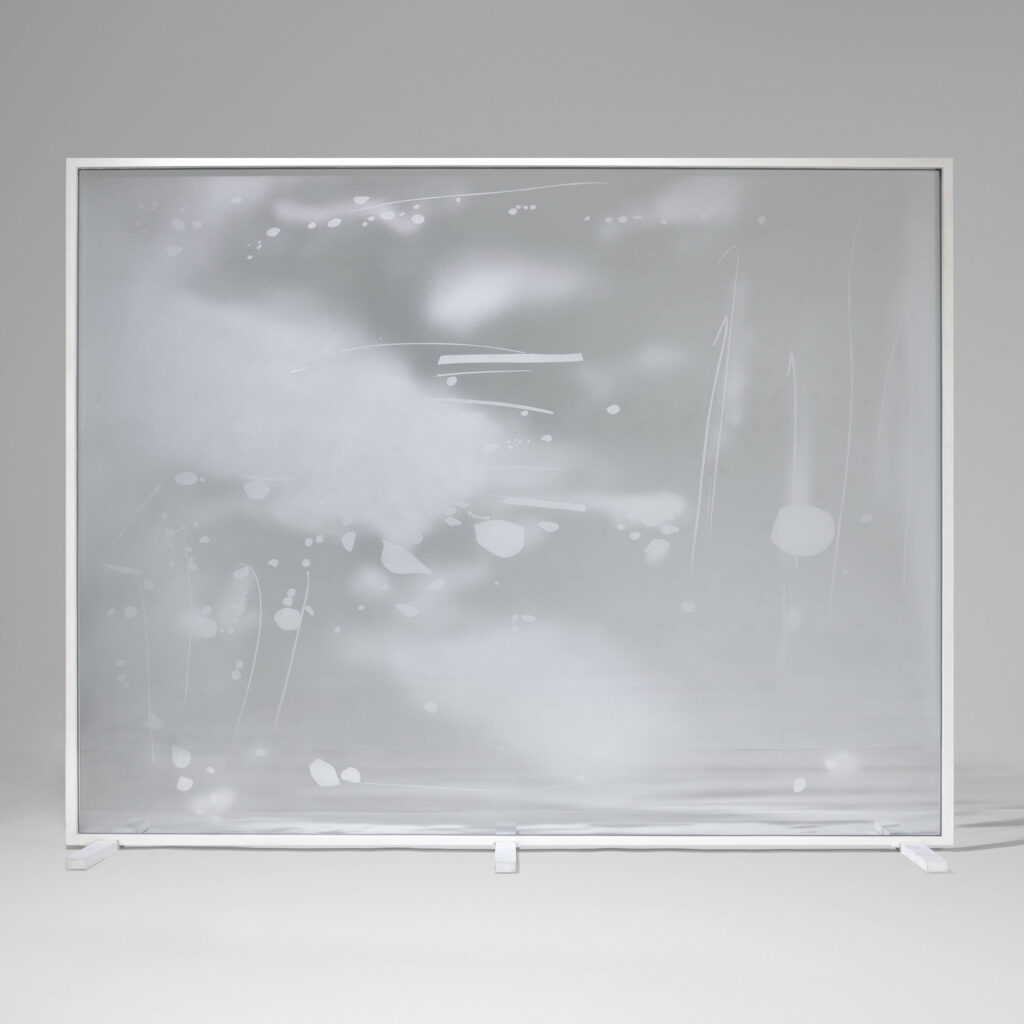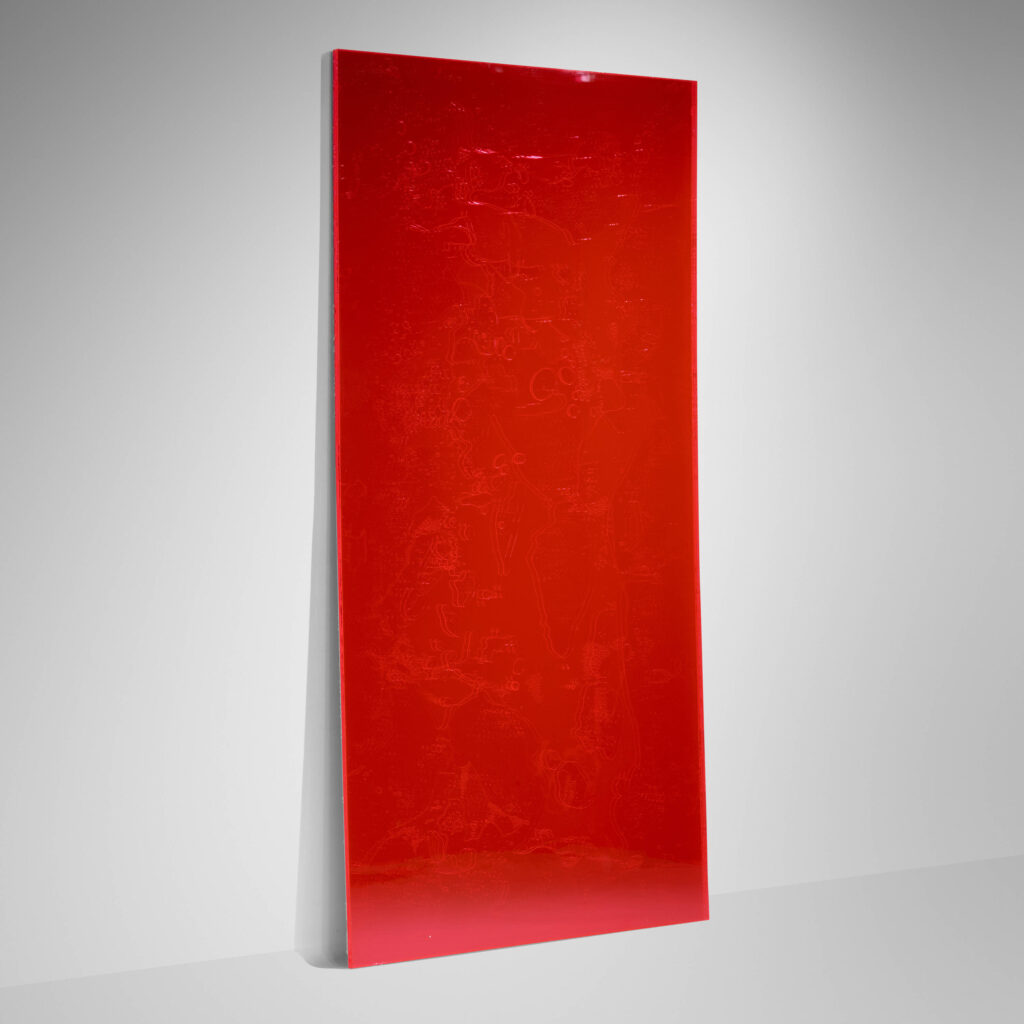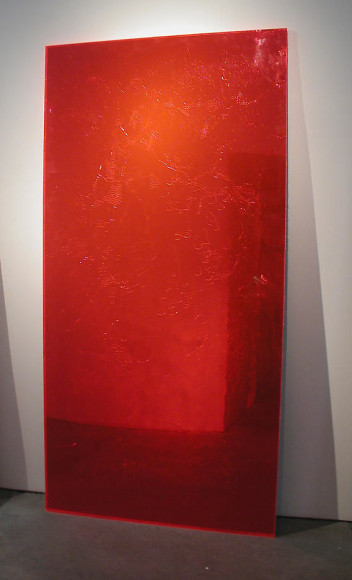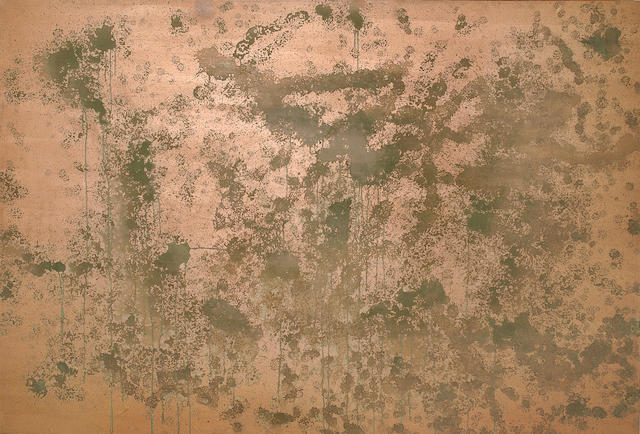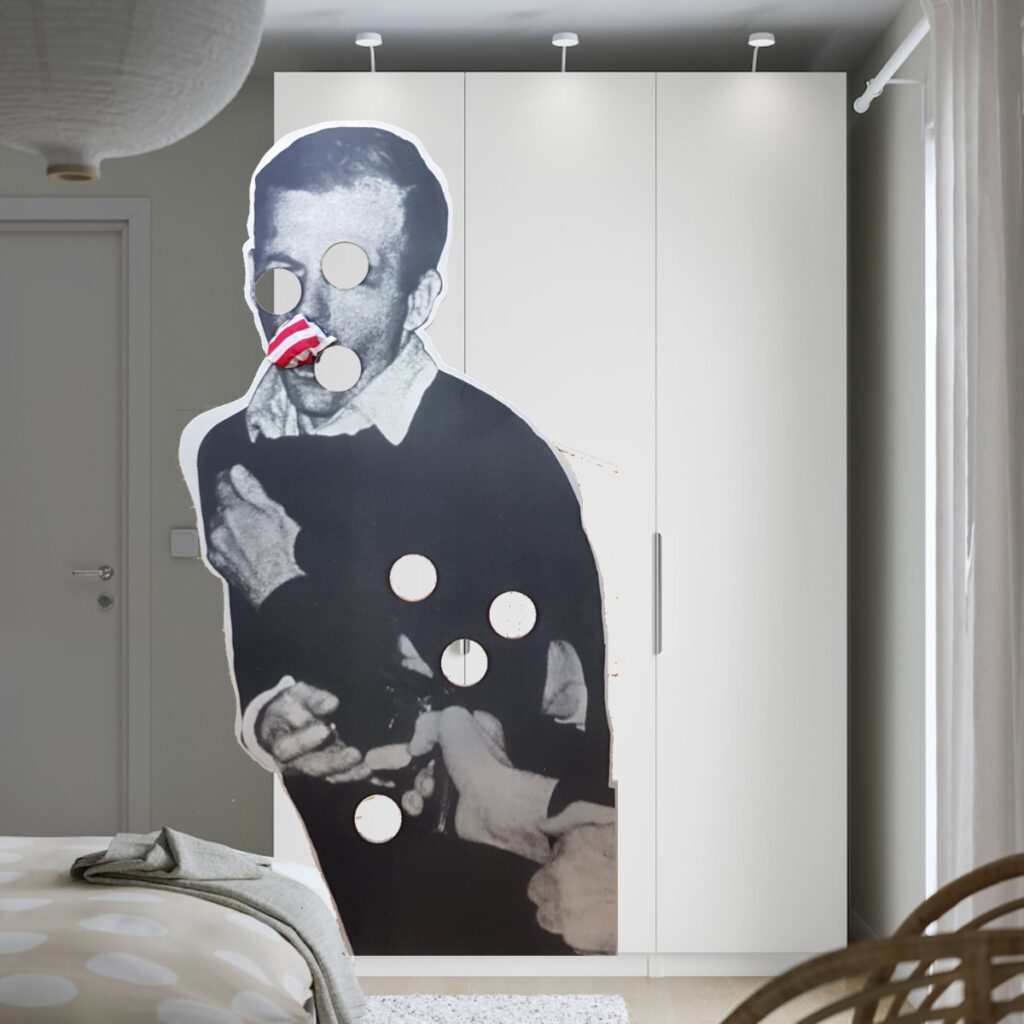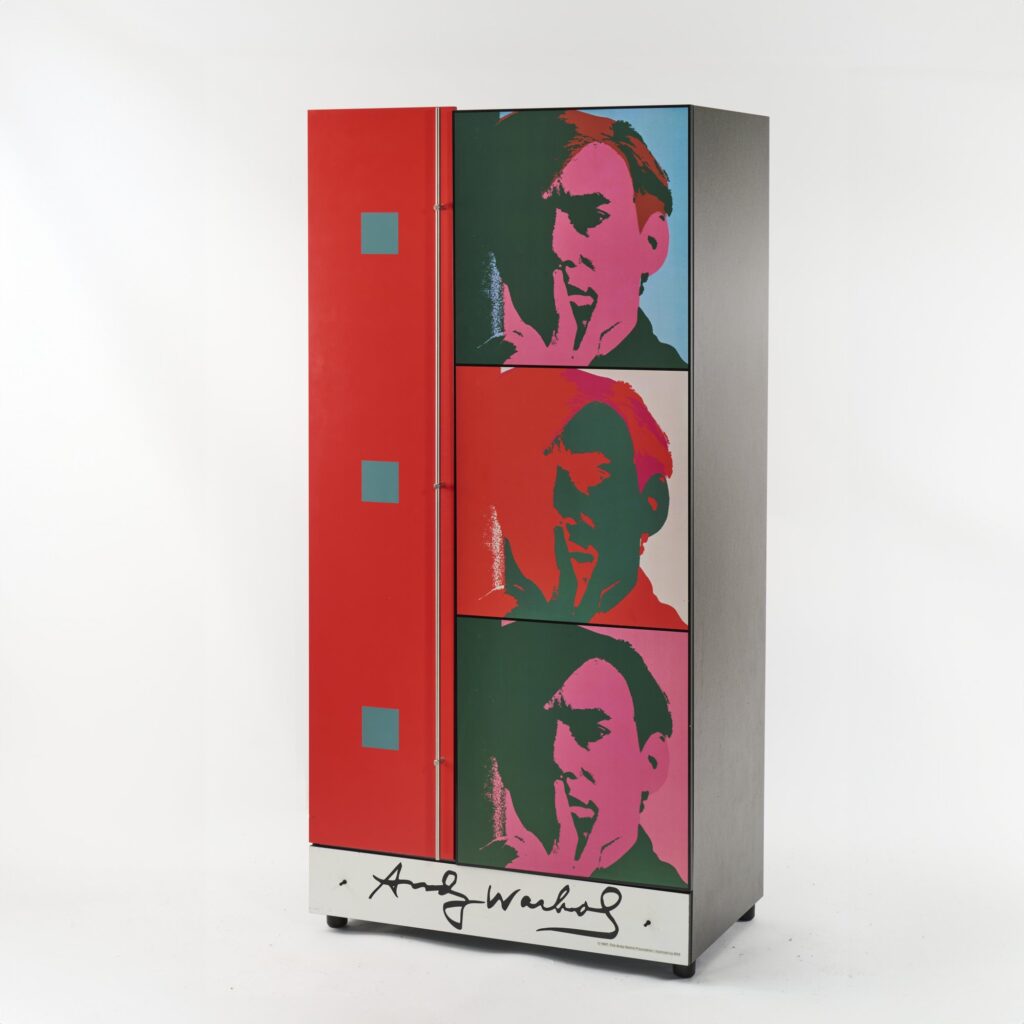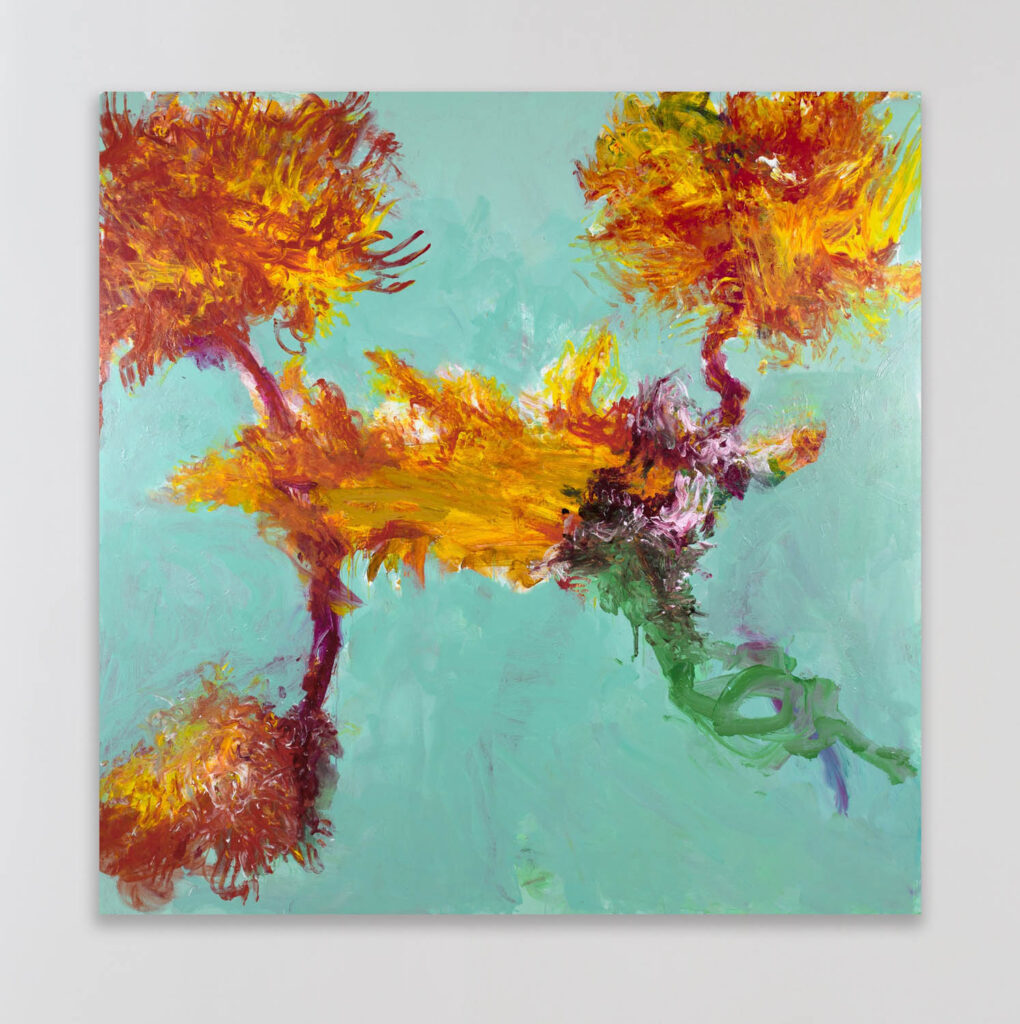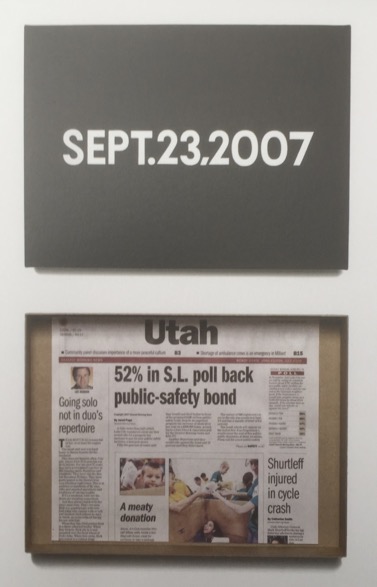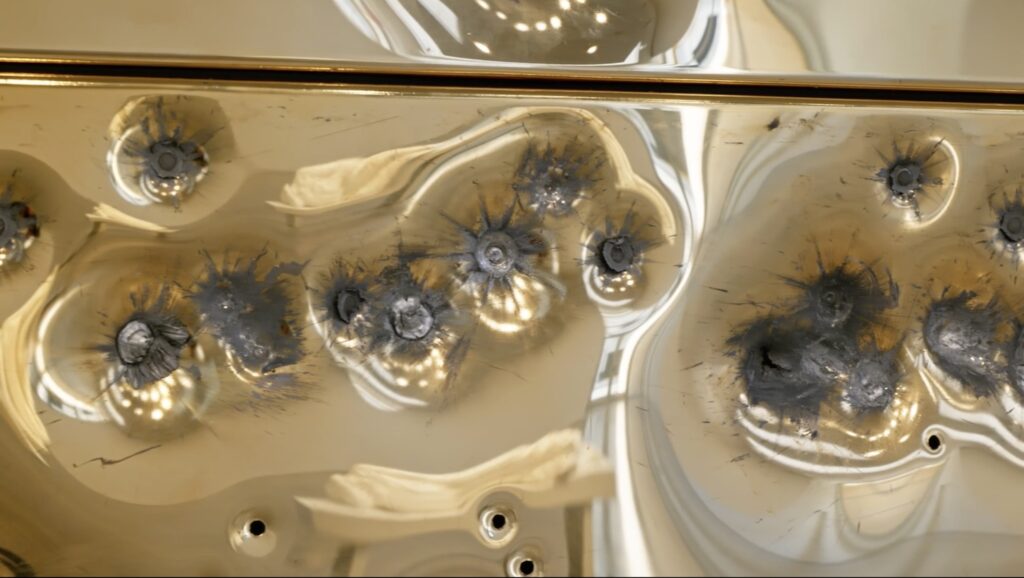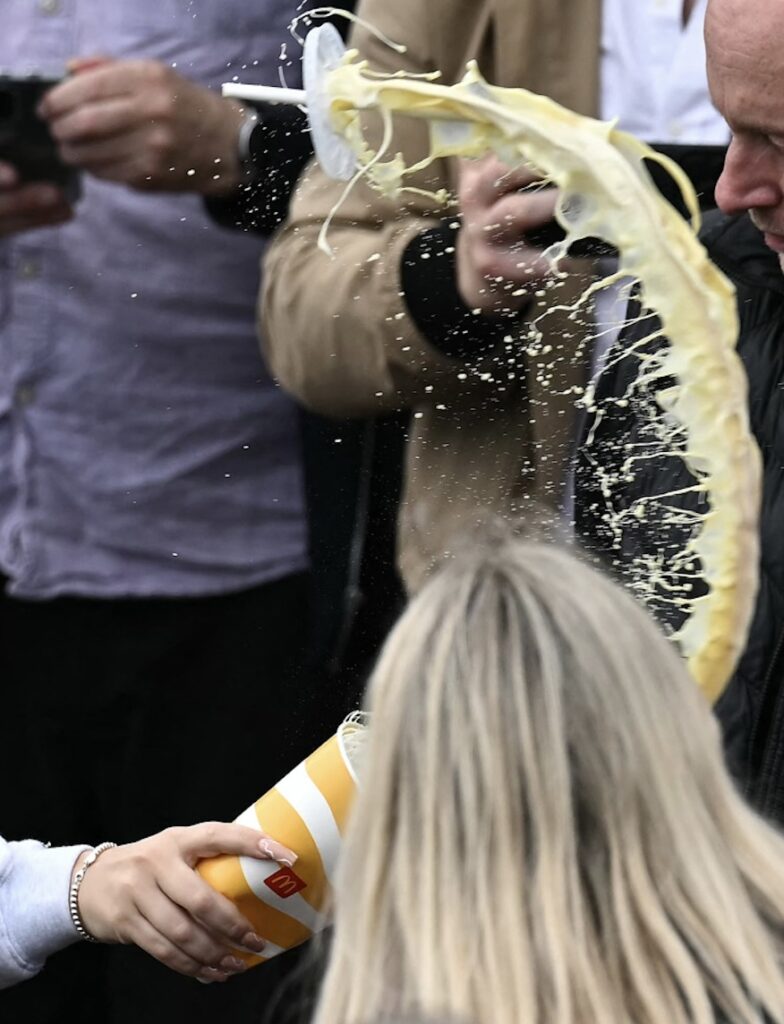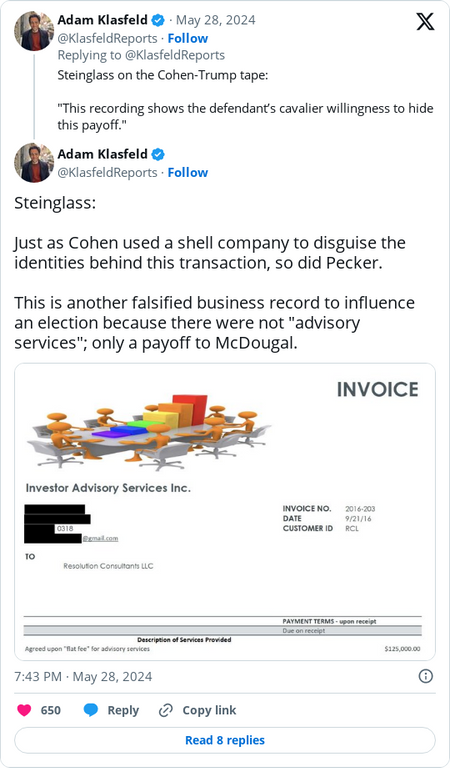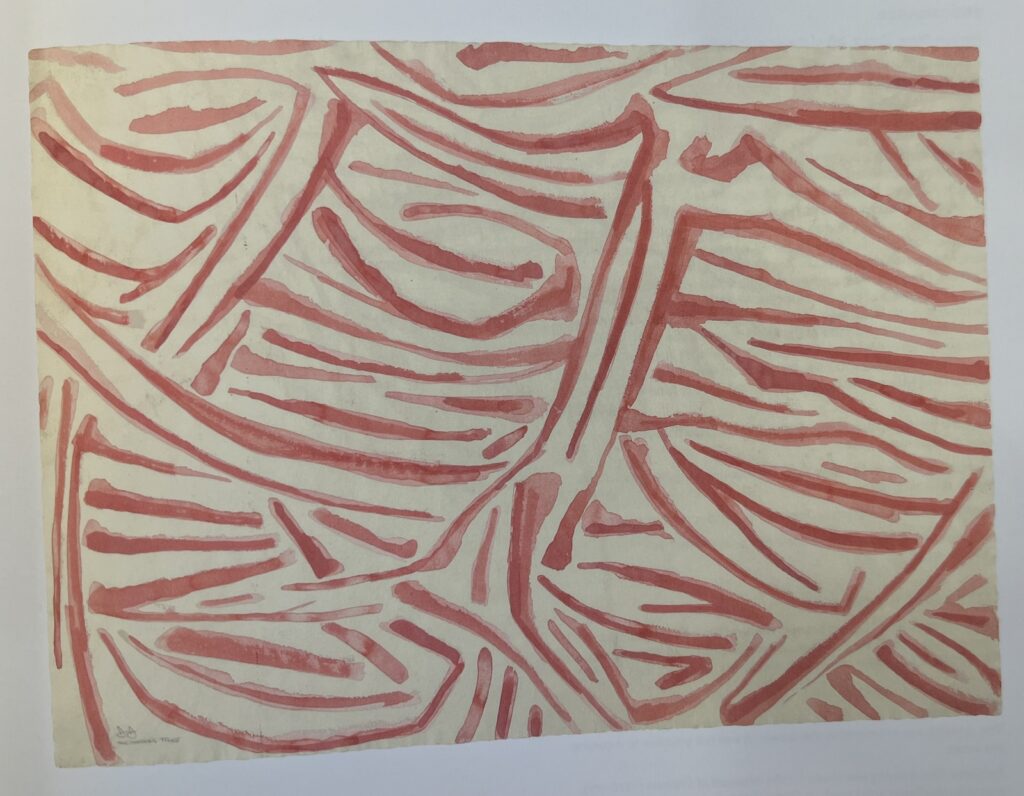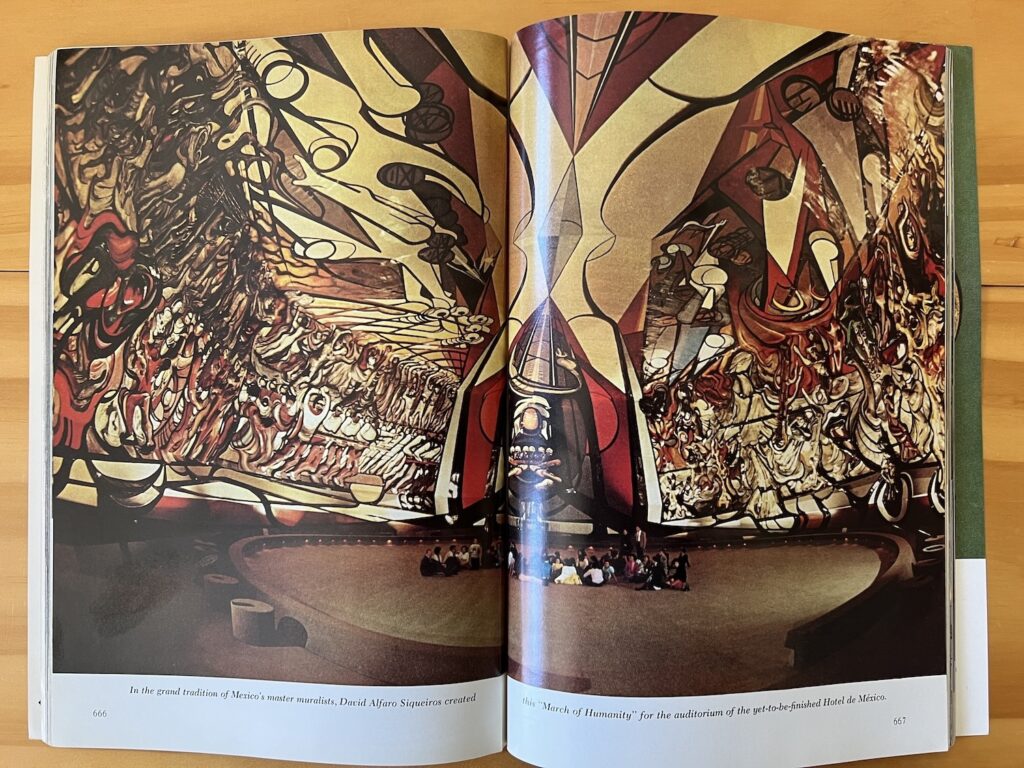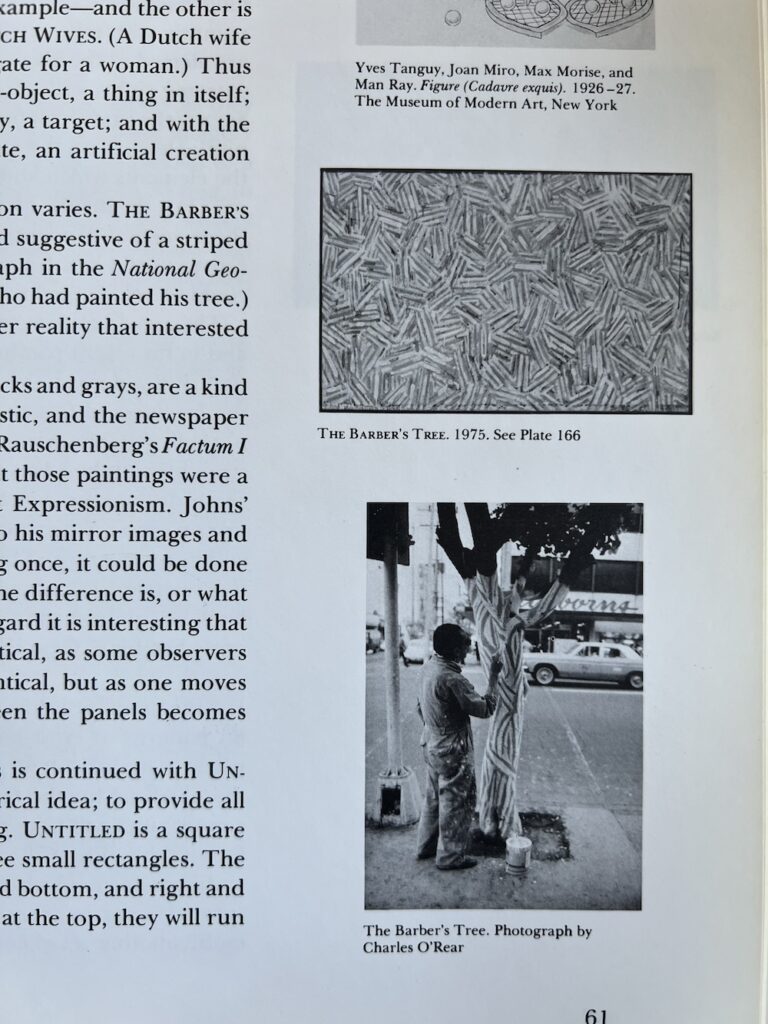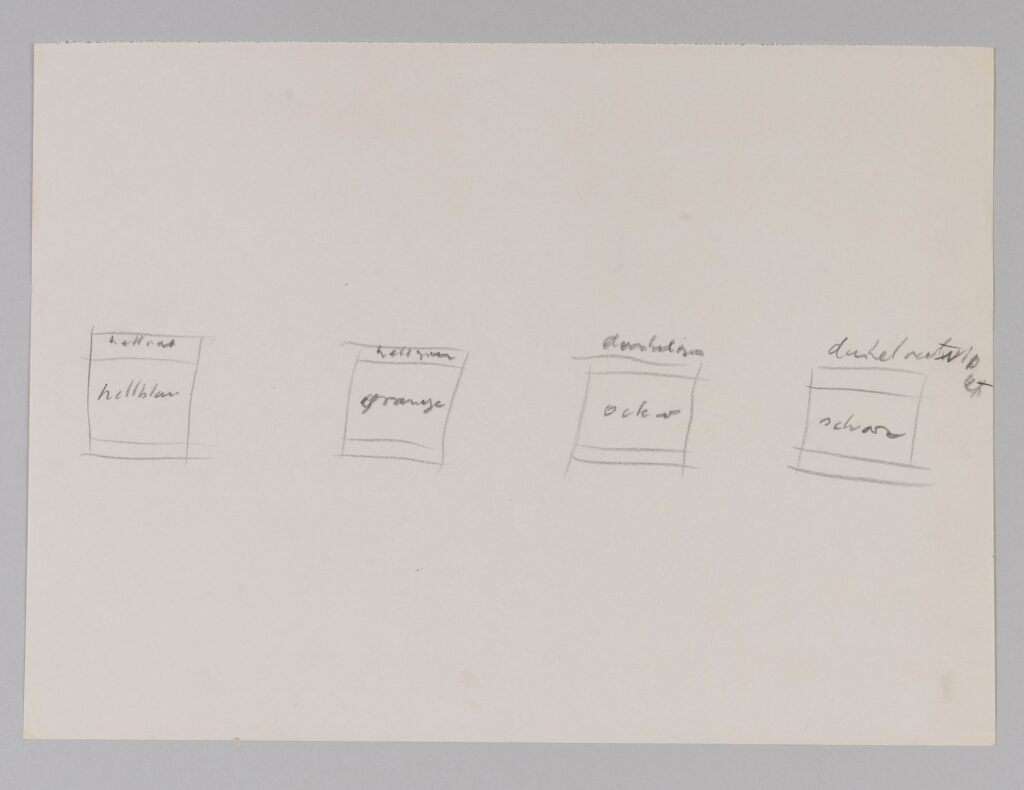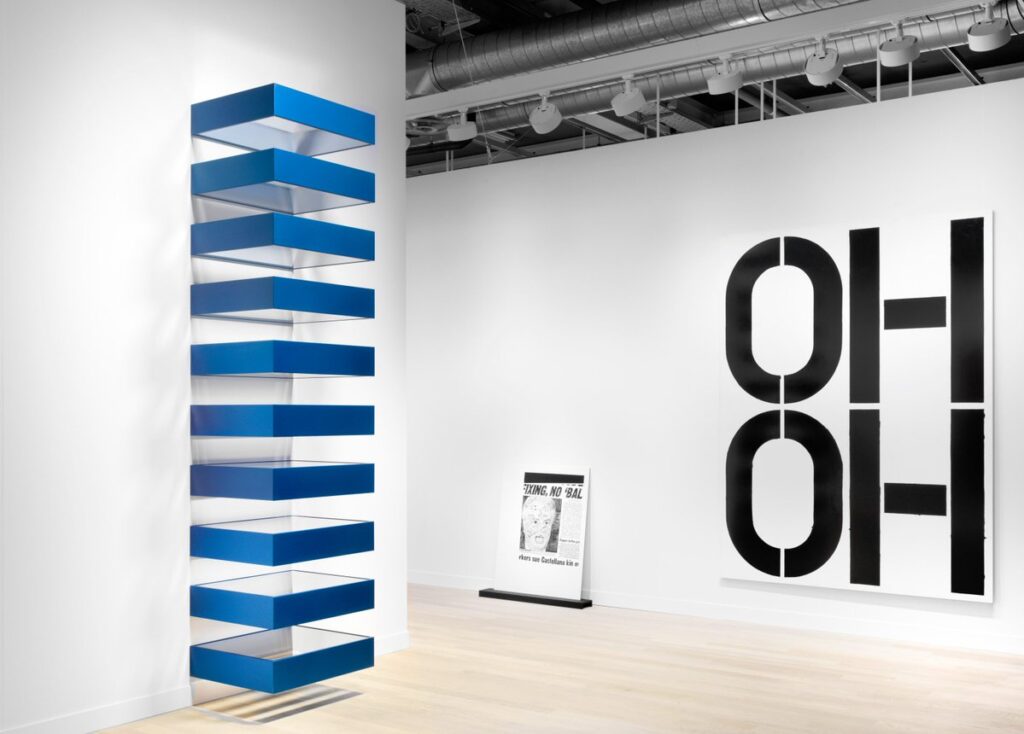
HO HO, what’s that on the floor of the Gagosian booth at Basel, between that 1990 Judd stack Zwirner also repped, and that 1990 Christopher Wool painting of Thompson Dean’s that Christie’s ended up with after it didn’t get one bid in 2021?
It is a Cady Noland with a 1990s subject—a NY Post article on mobster John Gotti’s 1992 trial—but a fresh, 2024 date.
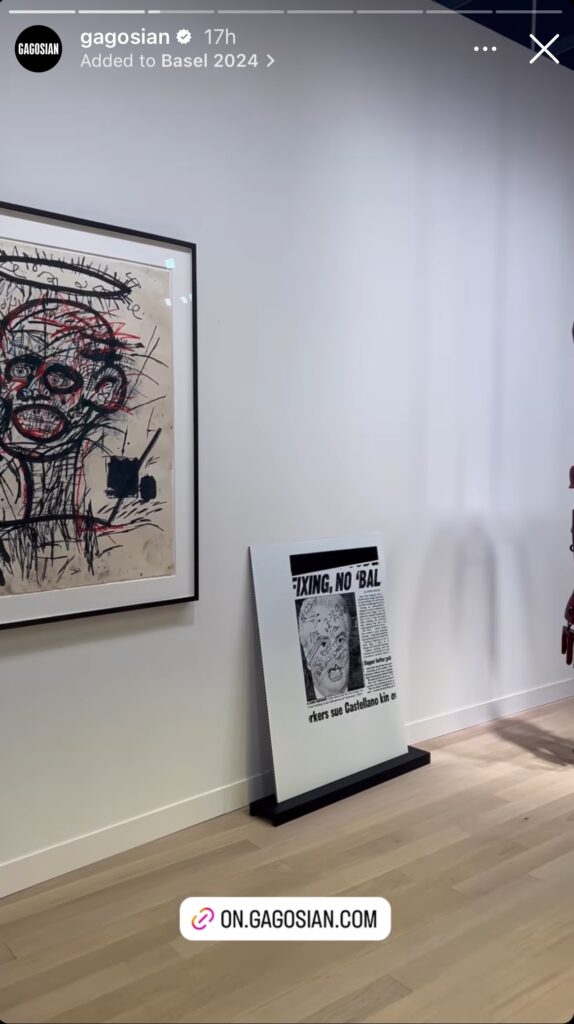
What does it mean that Noland put out a work in 2024 about a vain mobster nicknamed “the Dapper Don” being called out by the judge for trying to poison his trial by threatening witnesses? What does it mean that she seems to have made this work out of the same photocopy Andrew Russeth spotted five years ago, in Joanne Greenbaum’s wild 70+ artist group show, “Notebook,” at 56 Henry? [n.b.: “Notebook” closed a couple of weeks before the MMK retrospective opened.]
Did Noland look around her studio and laugh as she considered Greenbaum’s request for one notebook drawing or work they “would never show to a dealer or pull out during a studio visit”?
And the plinth? I just listened to Jeannine Tang’s talk at the MMK symposium that included several quotes from Noland and her sources about the problems of plinths. But I guess they’re OK for high traffic art fair booths?
There is another new Noland in Basel, a wire crate-o-stuff, and if I see the photo again of the guard-like woman standing next to it, I’ll post it here.
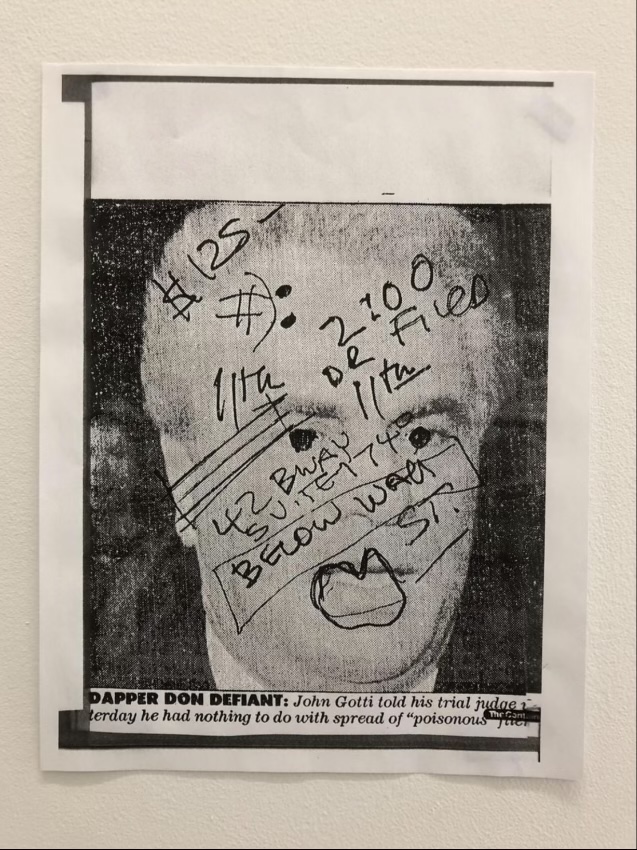
UPDATE: Meanwhile, here is what I understand is the piece Noland included in Notebook at 56 Henry in 2019. No date was forthcoming, but it is not, in fact, identical to image silkscreened on the 2024 work. It looks to be a cropped variation, copied with paper strips placed over the elements Noland wished to exclude. There is a little anomaly in the right side of the Gotti caption, which looks like a logo for The Container Store. Is it perhaps a trace of a plastic document sleeve, that might also be the cause of the uneven edge? It’s a narrow window into a practice few people even knew in 2019 was active. If, indeed, that was when Noland made this copy.
Previously, related: “we woke up in a world where Cady Noland makes and shows work. At Gagosian.”

